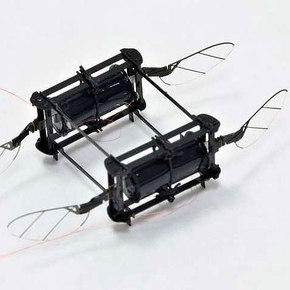RoboBees Harvard Breakthrough Invention

Microrobots with Controlled Flight Source: Harvard University Search & Rescue Missions Harvard's RoboBees are the first microbots powered by soft actuators to achieve controlled flight. They have soft artificial muscles that enable them to survive crashes and collisions making them perfect for search and rescue missions in dangerous, cluttered environments. The robobees are so sturdy, dexterous and resilient they can even crash into a wall or collide with another robobee without any damage. Hoverbots The tiny robots are equipped with actuators made from dielectric elastomers that deform when hit with an electrical current. The actuators are soft and the Harvard team says they're easily assembled and scaled up. Unlike other drones made with soft actuators, the robobees have enough power density to hover in place. Going for Commercialization The Harvard team has created a number of models including one with 8 wings and 4 actuators th...


